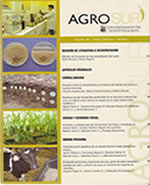The challenge of reducing metal phytotoxicity in soils affected by historical nickel-copper smelting operations in the Kola Peninsula, Russia
Main Article Content
Abstract
The topic of vegetative cover rehabilitation of industrial barrens sites has a worldwide significance, especially given the potential of the polluted soils themselves to be “secondary pollution sources.” The goal of this study was to determine the effect of peat addition to the lime + vermiculite-lizardite combined amendment on plant growth in the soils from the vicinity of the Ni/Cu smelter in the Kola Peninsula, Russia. Given the complexity and time-consuming nature of field studies, we decided to test the selected amendments under laboratory conditions first. Surface horizons from two Spodosols (0-20 cm) were collected in the vicinity of the Ni/Cu smelter. Lolium perenne was cultivated in pots for 21 days under controlled conditions. The difference in plant growth with and without peat was not substantial. In other words, the addition of peat did not improve the efficacy of the lime + vermiculite-lizardite combined amendment in promoting plant growth. Therefore, the challenge of reducing ryegrass exposure to soil metals remained unsolved.

